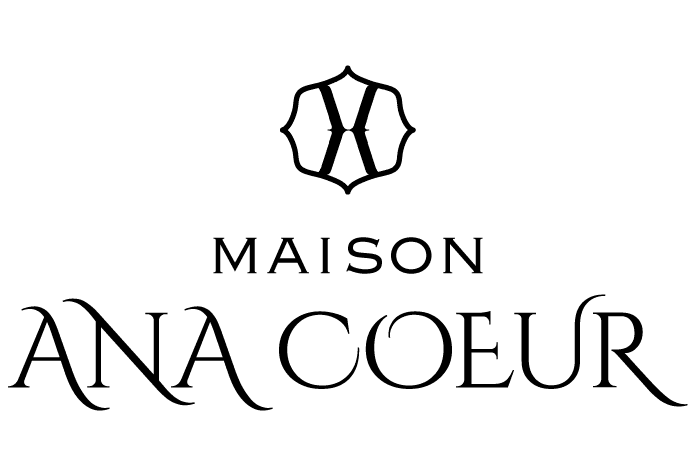The underlying purpose of a sales page + how to write it
Today I’m here to teach you an important lesson about sales and converting people into clients.
Entrepreneurs come to me very lost and confused about how to sell what they do. They don’t know how to communicate the value of their skills and services. They don’t know what makes them unique or what makes them stand out in a crowd. Come sales time, they are either writer’s blocked or tongue tied and don’t know what to say.
Before we begin design, I always spend a great deal of time educating entrepreneurs on their sales approach — it’s extremely important to me that my clients do well after their website has been launched.
We go through two creative journals, one of which helps them target their ideal customer. Then, we take it a step further by taking that ideal customer and translating that vision into an money–making sales page.
The key, of course, is in what you say on that page. I’ve sold products and services ranging from a thousand dollars to several million dollars. The concept of what I’m about to teach is the same no matter what you’re selling.
These are lessons I learned directly from personal experiences, successes and failures — not from a coach, a course or a book. These are the principles that make my current sales closing rate at 100%.
What on earth is the purpose of a sales page?
Most entrepreneurs will assume (correctly) that the purpose of a sales page is to generate sales. Tell the customer about what you’re offering and put a big buy button several times and voilà!
But here’s the real, underlying purpose of a sales page: you use it to fill in all the information gaps in your customer’s mind.
When a customer peruses your website and blog posts, she’s going to learn certain things about you, what you do and how you can help her. She may perceive that from your words, or it may be intuitive impressions that she picks up through your personal energy, photo, subject matter and graphics.
All of these impressions enter into a customer’s mind within seconds. By the time she hits your sales page, she feels good enough to stay and explore.
Now, your job is to fill in those gaps and you do that by show and tell on your sales page.
As she goes through what you have to say on your sales page, if there is any gap, any hole, any space of doubt in a customer’s mind, she. will. not. buy.
This is why lots of sales and conversion pages are so lengthy. It simply takes time and space to fill in a customer’s information gaps.
Hold this principle in the back of your mind whenever you are writing sales copy or marketing yourself. What does the customer not know that I need her to know? By focusing on filling in the gaps, your sales copy will be less aimless and also take a huge leap in power and punch.
Understand who you’re talking to
The ideal customer image represents who we most want to work with. But how do we appear from the customer’s point of view?
If you spend a great deal of time honing your ideal customer, yet do not address how you appear to them, then you will expend lots of energy converting very little clients.
How do we know how we appear to the customer?
To illustrate this, we’re going to talk about 3 distinct sales scenarios that go from easy to moderate to difficult.
Easy
Sales conversion is easy(ier) when the customer knows you, knows she has a problem, and knows you are a solution.
Moderate
Sales conversion is a moderate challenge when the customer doesn’t know you, but knows she has a problem, and doesn’t know you are a solution.
Difficult
Sales conversion is a difficult challenge when the customer doesn’t know you, doesn’t know she has a problem, and doesn’t know you are a solution.
Makes a whole lot of sense, yes?
Your first step is, then, to correctly diagnose which category best represents your situation. For entrepreneurs in the healing, coaching and wellness industry, I venture to say that the majority of products and services fall under the Moderate to Difficult category.
Many entrepreneurs are trying to market their creations to an audience which doesn’t know it has a problem. Financial coaches have an easier time because money problems are huge pain points and are easily recognizable by all.
But if one is marketing healing, intuitive development, empathy management, abundance, energetic release — these are all tough concepts to market because the end customer often doesn’t recognize she has this problem.
Depending on which category your product and service fall into, here’s how you talk about your work:
When it’s Easy, talk about your promise
When your customer knows you, knows she has a problem, and knows you are a solution, it is a much easier sell.
Related: How to Use Your Blog to Market Yourself
In this scenario, the customer doesn’t need awareness nor convincing that she has a problem. She is fully conscious of the areas which hold her back and where she needs help.
She also doesn’t need to know who you are anymore, because she’s been following you for a while and may already be an existing customer.
She also knows that you have a solution for her problem.
Information gap: What she doesn’t know, is how your product and service promises to cure her troubles.
The Promise
The promise, which is a cousin of Benefits, is a step higher and much more aspirational in tone.
Here, you spell out exactly what it is you promise, and you can do that through a bold tagline, creating ambiance with images and videos, inspirational copy, and creating a joyful, carefree atmosphere.
You might also give your past customers the floor to talk about their positive experiences via video where they all say, “You’ve got to buy this, this was the best decision I’ve ever made.”
When it’s Moderate, talk about your differentiation & positioning
Sales is a moderate challenge when your customer doesn’t know you, knows she has a problem, and doesn’t know you are a solution.
In this scenario, the good news is that the customer recognizes she has a problem. There is no hill to climb to deliver a wake–up call.
Information gap: When she knows she’s got a problem, but doesn’t know you and doesn’t know you to be the solution, spend all of your effort talking about differentiation and positioning. Why? Because she’s likely been shopping around for a solution for a while, and in her mind, she hasn’t made a choice yet of who to work with.
Differentiation & Positioning
Differentiation simply means how and why you are different from anybody else this customer could ever buy from. Be explicit and specific and go deep to find out what makes your service unique from others offering the same thing.
Positioning is the after–effect of differentiation. It means, now that you’ve established how you are different from everybody else, where do you stand? How do you position yourself to not just be A solution but THE solution? How do you establish your name to be synonymous with the solution?
Here is a simple analogy: McDonald’s sells Happy Meals and no one else does (differentiation).
When I think of Burger King, I think of hamburgers. But when I think of hamburgers, I think of McDonald’s (positioning — and bad news for Burger King!).
If your sales situation falls under this category, you can spend 80-95% of your sales page talking about these two points.
When it’s Difficult, talk about the problem and your benefits
Sales is difficult when your customer doesn’t know you, doesn’t know she has a problem, and doesn’t know you are a solution. Yikes!
Related: Should I Market the Modality or the Transformation?
How exactly do you bring a customer to consciousness about the fact that she has a problem?
How do you tell someone over a webpage, “LOOK at your problem. Do you recognize any of these symptoms? If so, you’ve GOT A PROBLEM. Don’t you see it already?”
This is the reason why almost all of the sales copy I’ve seen within the past 18 months all start with a bullet point list of symptoms asking, “Do you have this? Have that? Feel this way? Don’t feel this way?”
When the customer doesn’t know she has a problem, it is a difficult sell because you have the extra work of trying to convince her to look at what she doesn’t want to look at.
If your audience lives in a bit of denial, it will take a long time, over a period of months and many more months, until they get comfortable enough with what you’ve been saying.
When your product or service falls into this category, what you do is talk about the problem very extensively, from lots of different angles. Beyond just a sales page, you’ll have to market this problem and all the associated fears through your blog and just about everywhere on your website.
Discussing benefits come into play when a potential customer knows she needs something, but doesn’t want something. Purchasing comes from the ego, and that’s why people don’t buy what they need. They buy what they want. How do you make them want what you’ve got, if they don’t know they want it?
You’ll also need to spend some effort marketing yourself and helping the customer get to know you, and how you are a solution to a problem they (don’t) recognize.
See how tough this is?
The entrepreneur may wish to ride this out and be a catalyst to making this problem be recognized at critical mass. Or, she may choose to target a different audience with the same offering, or create another product or service with a higher market demand.
♥ ♥ ♥
In addition to designing websites, I also lead entrepreneurs through creating their sales page, discovering their value, and talking about their differentiation and positioning.
Hi, I’m Ana Coeur

intuitivepicture.com
Schedule a free assessment of your website and business
Show me your website and I’ll share with you what I sense and what we can accomplish together. Here’s how to book your free assessment:


Sue Sullivan
Anni, this was excellent. Thanks for sharing!!
Anni @ Intuitive Picture
I’m glad you liked it, Sue. Thanks for your comment!